Introduction to OpenCV
Vadim Pisarevsky
Senior Software Engineer
Intel Corporation, Software and Solutions Group
�
Agenda
General Information
Getting Started with OpenCV
Modules Description
Interaction with Intel IPP
Python Interface
Some Usage Examples
Summary
2/67
�
General Information
3/67
�
What is OpenCV?
OpenCV stands for Open Source Computer Vision Library
Includes over 500 functions implementing computer vision, image
processing and general-purpose numeric algorithms.
Portable and very efficient (implemented in C/C++)
Has BSD-like license (that is, absolutely free for academic and
commercial use)
Available at http://sourceforge.net/projects/opencvlibrary
4/67
�
Why OpenCV?
Computer Vision Market is large and continues to grow
There is no standard API (like OpenGL and DirectX in graphics, or
OpenSSL in cryptography), most of CV software is of 3 kinds:
– Research code (slow, unstable, independent/incompatible data types for
every library/toolbox)
– Very expensive commercial toolkits (like Halcon, MATLAB+Simulink, …)
– Specialized solutions bundled with hardware (Video surveillance,
Manufacturing control systems, Medical equipment …)
Standard library would simplify development of new applications and
solutions much easier.
Special optimization for Intel Architectures:
– Creates new usage models by achieving real-time performance for quite
“heavy” algorithms (like face detection)
– Makes Intel platforms attractive for CV developers
5/67
�
The Project History
“CVL” project was started; the main
goals/features:
• Human-Computer interface is a
main target
• Real-Time Computer Vision Library
for using by UI Developers,
Videoconferences, Games
• Highly optimized for Intel Arch.
First Open
Source Release:
OpenCV alpha 3
at CVPR’00
OpenCV beta 1
with Linux
support:
CVPR’01
OpenCV 1.0
with MacOSX
support
1999/01
2000/06 2000/12
2006/10
Continuous development and
various research projects
6/67
�
OpenCV Community
The library is actively used by a large number of companies (such as
Intel, IBM, Microsoft, SONY, Siemens, Google,…) and research centers
(Stanford, MIT, CMU, Cambridge, INRIA etc.)
>14000 members of the forum OpenCV@yahoogroups.com, with
average daily traffic ~10-20 messages.
Community contributes to the project: bug reports, patches, new
features (video acquisition, 3d tracking, textures, Python interface)
7/67
�
Supported Platforms
IA32 (x86)
EM64T (x64)
IA64
(Itanium)
Other (PPC,
Sparc)
Windows (w. IPP;
VS98,VS2005(Op
enMP),ICC,GCC,
BCC)
(w. IPP; GCC,
ICC)
Linux
(w. IPP,
VS98+PSDK,
VS2005(OpenMP))
Partial
Support
N/A
(w. IPP; GCC,
ICC)
(GCC, ICC)
MacOSX (w. IPP, GCC,
native APIs)
? (not tested)
N/A
(iMac G5, GCC,
native APIs)
Others
(BSD,
Solaris…)
8/67
Reported to build
on UltraSparc,
Solaris
�


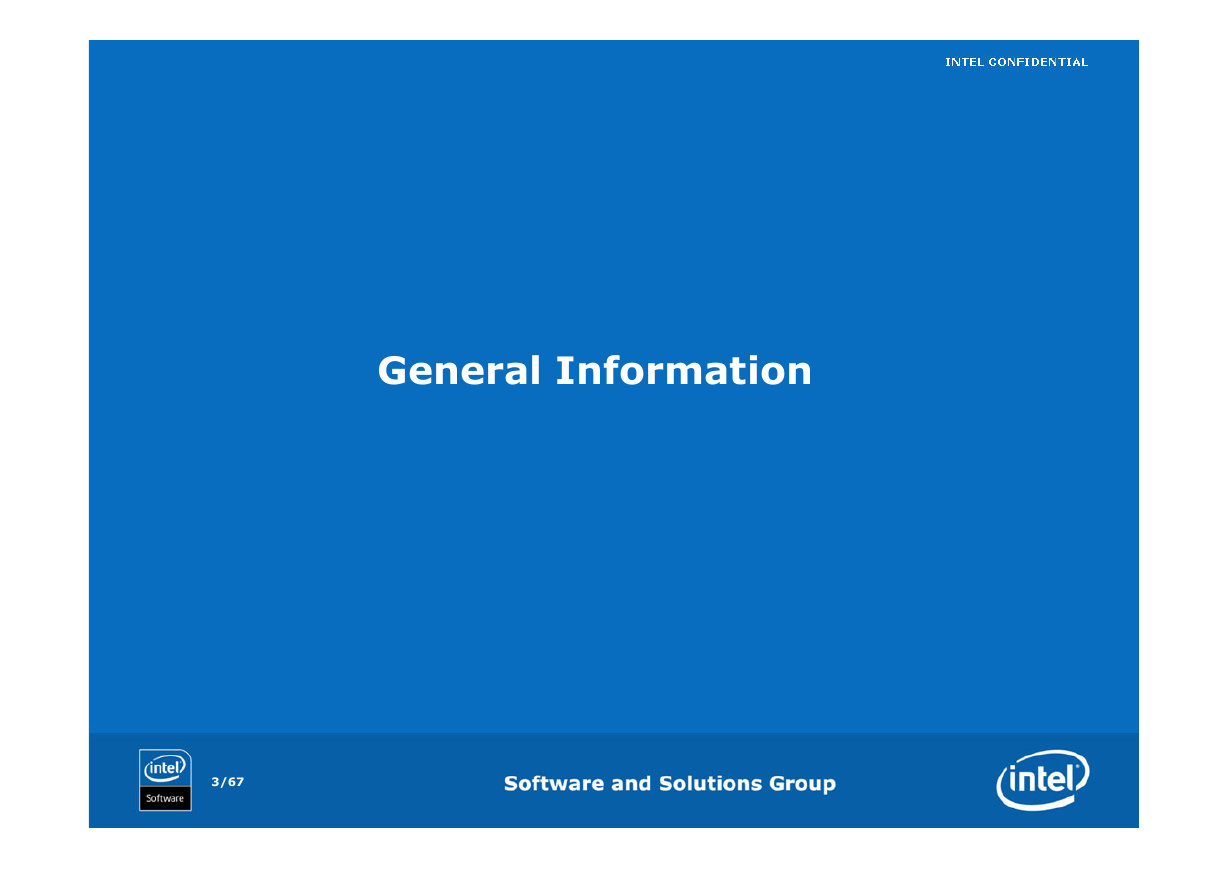
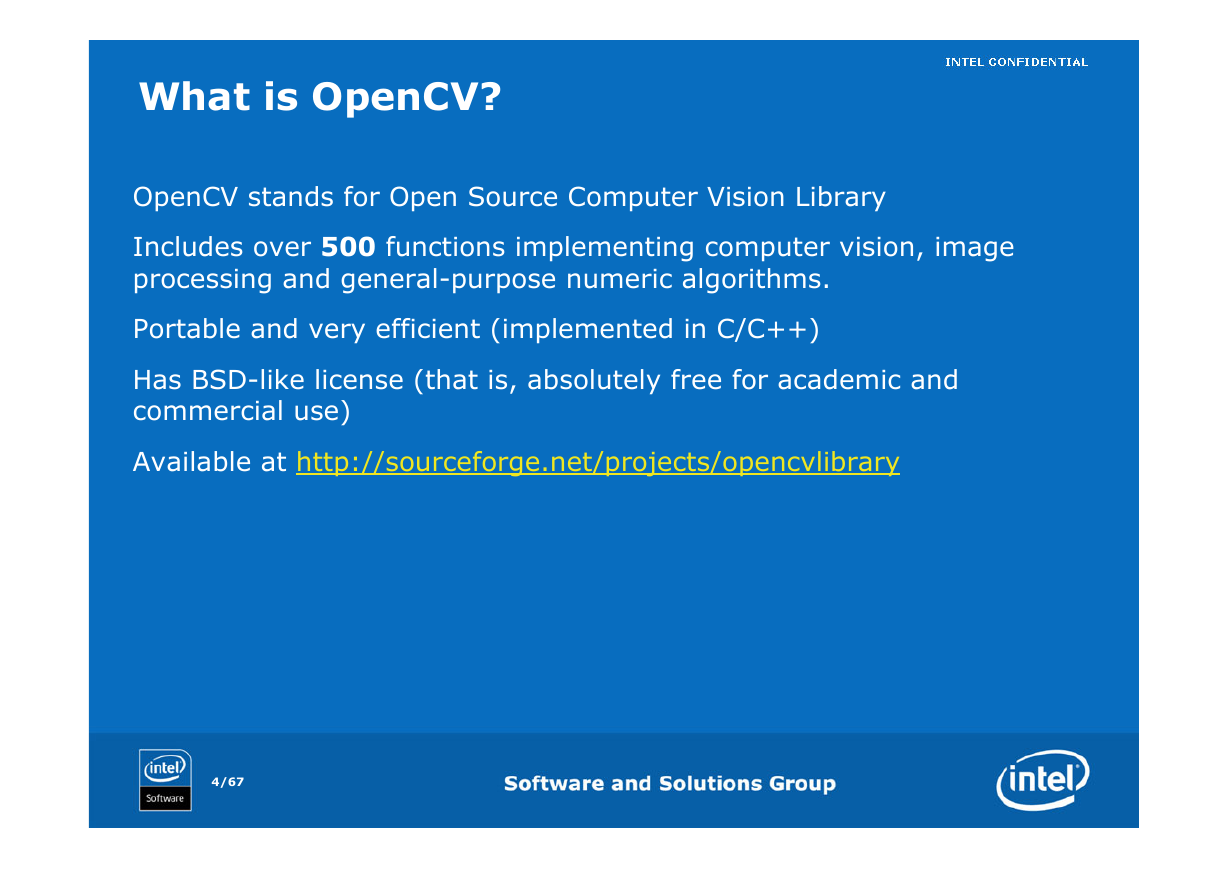
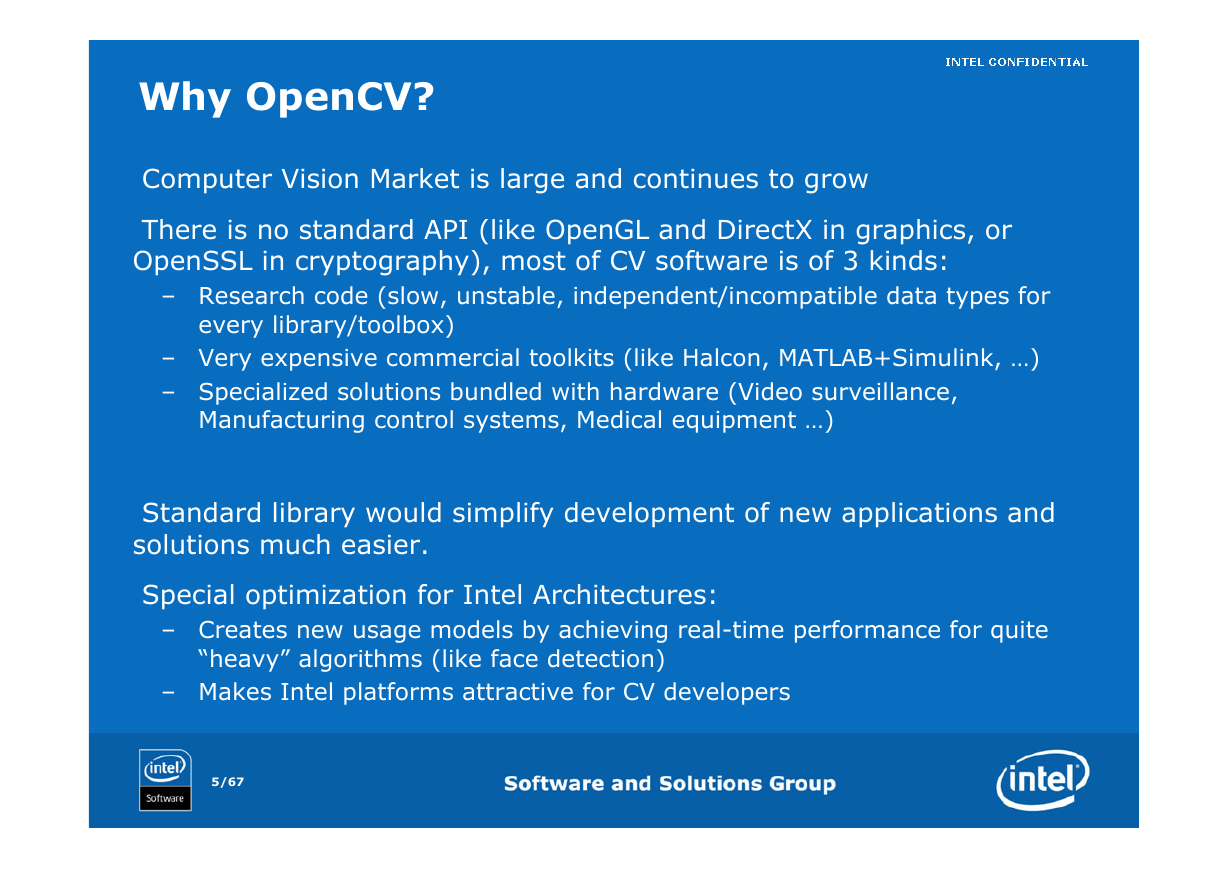
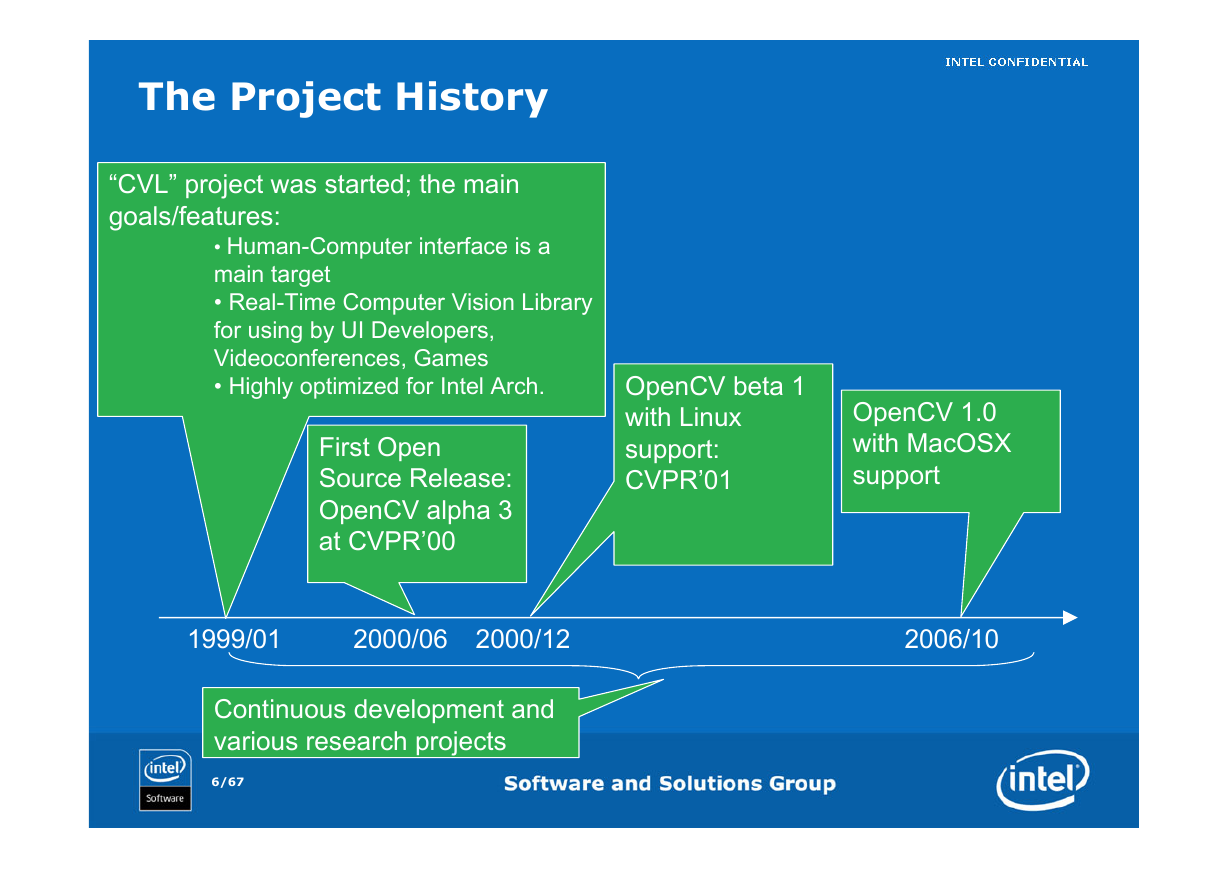
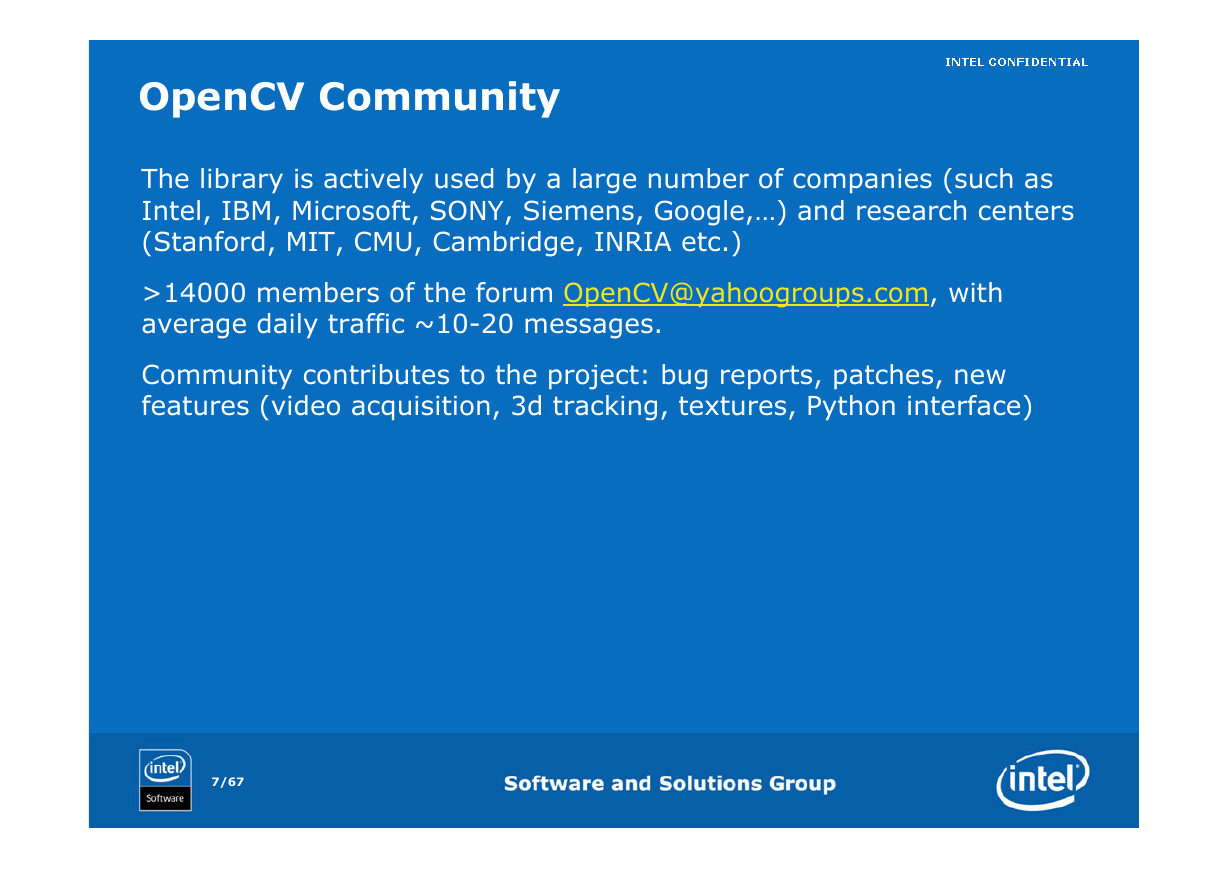
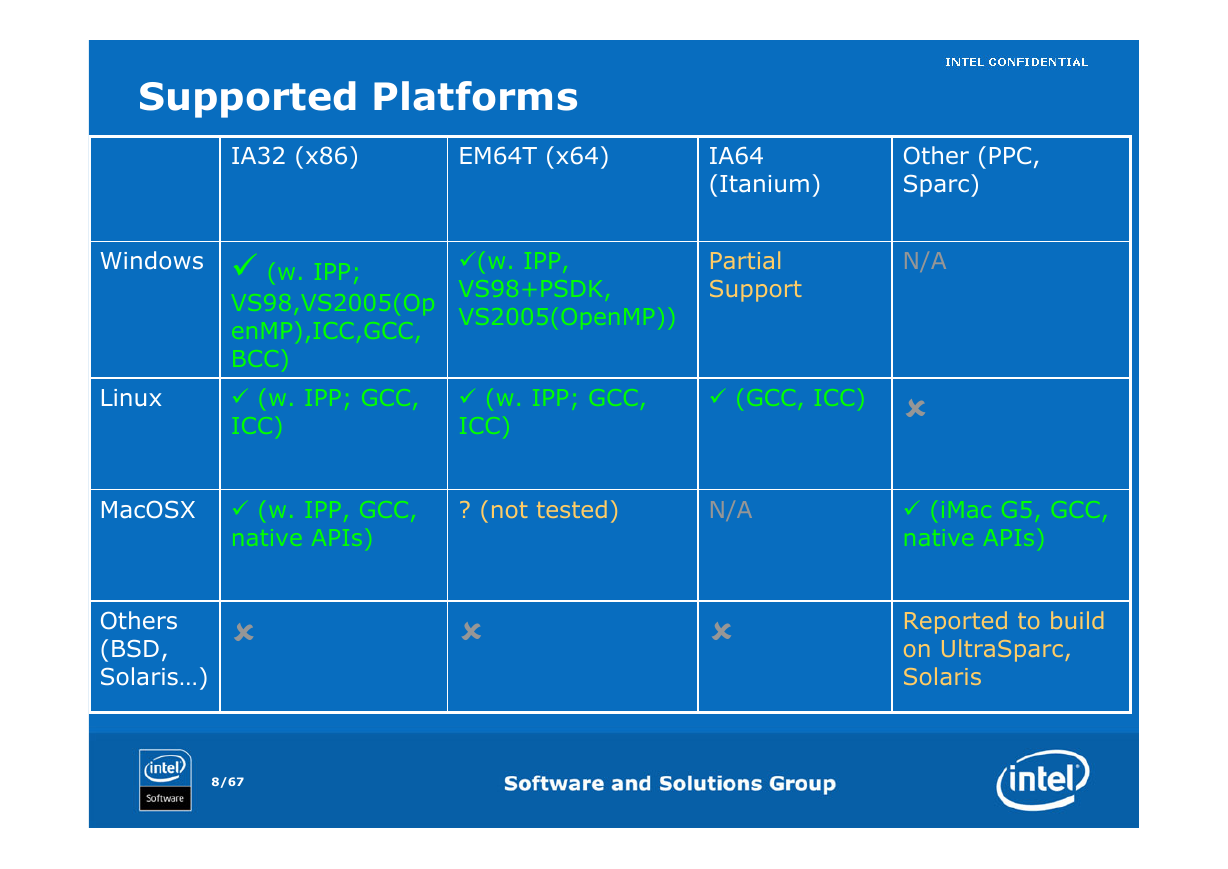








 2023年江西萍乡中考道德与法治真题及答案.doc
2023年江西萍乡中考道德与法治真题及答案.doc 2012年重庆南川中考生物真题及答案.doc
2012年重庆南川中考生物真题及答案.doc 2013年江西师范大学地理学综合及文艺理论基础考研真题.doc
2013年江西师范大学地理学综合及文艺理论基础考研真题.doc 2020年四川甘孜小升初语文真题及答案I卷.doc
2020年四川甘孜小升初语文真题及答案I卷.doc 2020年注册岩土工程师专业基础考试真题及答案.doc
2020年注册岩土工程师专业基础考试真题及答案.doc 2023-2024学年福建省厦门市九年级上学期数学月考试题及答案.doc
2023-2024学年福建省厦门市九年级上学期数学月考试题及答案.doc 2021-2022学年辽宁省沈阳市大东区九年级上学期语文期末试题及答案.doc
2021-2022学年辽宁省沈阳市大东区九年级上学期语文期末试题及答案.doc 2022-2023学年北京东城区初三第一学期物理期末试卷及答案.doc
2022-2023学年北京东城区初三第一学期物理期末试卷及答案.doc 2018上半年江西教师资格初中地理学科知识与教学能力真题及答案.doc
2018上半年江西教师资格初中地理学科知识与教学能力真题及答案.doc 2012年河北国家公务员申论考试真题及答案-省级.doc
2012年河北国家公务员申论考试真题及答案-省级.doc 2020-2021学年江苏省扬州市江都区邵樊片九年级上学期数学第一次质量检测试题及答案.doc
2020-2021学年江苏省扬州市江都区邵樊片九年级上学期数学第一次质量检测试题及答案.doc 2022下半年黑龙江教师资格证中学综合素质真题及答案.doc
2022下半年黑龙江教师资格证中学综合素质真题及答案.doc